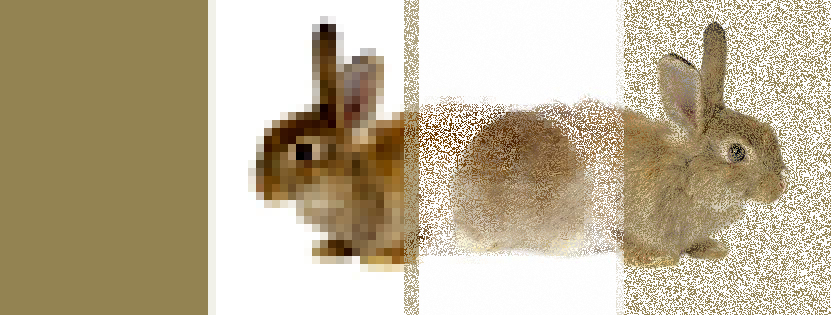by Challis Hodge on 2003/08/11
“Semiotics is important for designers as it allows us to understand the relationships between signs, what they stand for, and the people who must interpret them — the people we design for.”
In its simplest form, Semiotics can be described as the study of signs. Not signs as we normally think of signs, but signs in a much broader context that includes anything capable of standing for or representing a separate meaning.
Paddy Whannel[1] offered a slightly different definition. “Semiotics tells us things we already know in a language we will never understand.” Paddy’s definition is partly right. The language used by semioticians can often be overkill, and indeed semiotics involves things we already know, at least on an intuitive level. Still, semiotics is important for designers as it allows us to understand the relationships between signs, what they stand for, and the people who must interpret them — the people we design for.
The science of Semiology (from the Greek semeîon, ‘sign’) seeks to investigate and understand the nature of signs and the laws governing them. Semiotics represents a range of studies in art, literature, anthropology, and the mass media rather than an independent academic discipline. The disciplines involved in semiotics include linguistics, philosophy, psychology, sociology, anthropology, literature, aesthetic and media theory, psychoanalysis and education.
Origins of Semiotics
Swiss linguist Ferdinand de Saussure[2] is considered to be the founder of linguistics and semiotics. Saussure postulated the existence of this general science of signs, or Semiology, of which linguistics forms only one part. Semiology therefore aims to take in any system of signs, whatever their substance and limits; images, gestures, musical sounds, objects, and the complex associations of all these, which form the content of ritual, convention or public entertainment: these constitute, if not languages, at least systems of signification. [Ler mais...]
References
[1] Semiotics, Structuralism, and Television, Ellen Seiter, 1992.
[2] Saussure, Ferdinand de (1993). Third Course of Lectures on General Linguistics. Pergamon Press. http://www.marxists.org/reference/subject/philosophy/works/fr/saussure.htm
[3] In Perspective: Valentin Voloshinov, Issue 75 of International Socialism, Quarterly Journal of the Socialist Workers Party (Britain), Published July 1997. http://pubs.socialistreviewindex.org.uk/isj75/parring.htm
[4] Chandler, David (2001). Semiotics: The Basics. Routledge. ISBN 0415265940
Bibliography
Barthes, Roland (1964). Elements of Semiology. Hill and Wang.
http://www.marxists.org/reference/subject/philosophy/works/fr/barthes.htm.
Chandler, David (2001). Semiotics: The Basics. Routledge. ISBN 0415265940.
Saussure, Ferdinand de (1993). Third Course of Lectures on General Linguistics. Pergamon Press. http://www.marxists.org/reference/subject/philosophy/works/fr/saussure.htm.
Stuart Hall, Recent Developments in Theories of Language and Ideology: A Critical Note, from Culture, Media, Language: Working Papers in Cultural Studies, 1972-1979 (1980).
Vestergaard, T & K Schroder (1985): The Language of Advertising. Oxford: Blackwell.
Umberto Eco, A Theory of Semiotics (Bloomington: Indiana University Press, 1976), p. 16.
…
skip to main |
skip to sidebar
glossário tipográfico
tipografias
A
arquitectura
artes
B
bancos de imagem
bibliotecas
bibliotecas digitais
bienais
bolsas
C
cinema
cit_Anabela Gradim
cit_Andy Cameron
cit_António Fidalgo
cit_António Pardal Monteiro
cit_António Victorino d'Almeida
cit_Eadweard Muybridge
cit_Edward Tufte
cit_Federico Fellini
cit_Jorge Spencer
cit_José A.Bragança Miranda
cit_Joseph Pulitzer
cit_Kohei Sugiura
cit_Lao Tsé
cit_Mei-Mei Berssenbrugge
cit_Michael Bach
cit_Norberto Chaves
cit_Richard Wagner
cit_Victor Papanek
citações
conferências
cor
cultura
D
data visualization
desenho
design
design de comunicação
design de moda
design de produto
design inclusivo
design industrial
dissertações
documentários
E
eco-design
estética
estudos em comunicação
eventos
F
fotografia
G
galerias
I
Instituições
interfaces
investigação
J
jornais
L
livros
livros_online
livros_tipografia
M
marcas
motion graphics
multimédia
museus
música
P
pessoas
portfolio
publicações
R
recursos
revistas
S
semiótica
T
teatros
teorias
teses
tipografia
tutoriais
U
universidades
V
visual effects
W
web design
web sites



